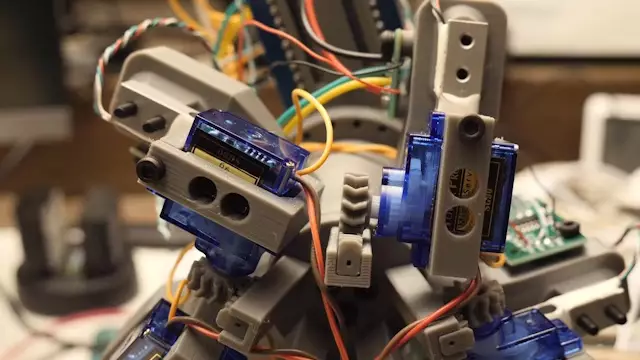The allure of robotic lockpicking captivates the imagination, blending the elegance of physics with cutting-edge engineering. Imagine a tiny, intelligent device—so small it fits in your palm—that can manipulate the intricate mechanics of a lock with precision and finesse. This concept, once confined to science fiction, is increasingly within reach thanks to innovative projects like those undertaken by Sparks and Code. Their efforts highlight both the tantalizing potential and the complex hurdles that lie ahead in developing robots capable of unlocking safes, doors, and security systems solely through the application of physical principles.
From Brute Force to Sensory Precision
Early attempts at robotic lockpicking relied on brute-force methods, essentially forcing pins or tumblers into alignment. While this approach could eventually yield results, it was inefficient and often impractical, especially for more complex locks. Recognizing this, engineers and hobbyists have shifted toward more sophisticated techniques that emulate human intuition—most notably, sensing the tension within lock components.
By designing robots that can “feel” the resistance of each pin or tumbler, developers aim to create machines that can delicately manipulate the lock with expert-level finesse. For instance, by detecting the subtle tension changes as a pin set is manipulated, these robots can apply precisely controlled pressure, mimicking the delicate touch of a skilled locksmith. This physics-based approach promises faster lockpicking, reduced trial-and-error, and a more elegant solution to what was once a straightforward but laborious task.
The Technical Challenges Behind the Dream
Despite the seemingly straightforward concept, translating it into a reliable, effective robotic system remains a formidable challenge. Sparks and Code’s experiments have demonstrated that sensing internal lock mechanics is far more complicated than it initially appeared. Locks are designed to thwart such assaults, with increasingly convoluted mechanisms, tighter tolerances, and unpredictable resistance patterns.
The core difficulty lies in accurately reading the minute feedback signals—tiny variations in tension—that an embedded sensor must interpret. These signals are often muddled by external influences, manufacturing imperfections, or the complexities of different lock designs. Moreover, the robot’s mechanical components must operate with extraordinary precision to respond effectively, which demands high-quality actuation systems and advanced control algorithms.
While the concept of a physics-based lockpicking robot is compelling, the practical implementation is riddled with setbacks. Sparks and Code’s iterative process of tweaking code and hardware underscores how difficult it is to bridge the gap between theoretical possibility and real-world application. The project, currently on hiatus, exemplifies the iterative nature of technological innovation—slow, sometimes frustrating, but ultimately essential for progress.
The Broader Implications and Ethical Considerations
The development of such sophisticated lockpicking robots raises important questions about security and ethics. As these machines become more capable, they could potentially be exploited for malicious purposes, undermining security systems that rely on physical locks. Conversely, the same technology could revolutionize locksmithing, enabling faster, more efficient lock repair, or aiding in critical rescue operations where human entry is impossible.
This duality underscores the importance of responsible innovation. Developers must anticipate the potential misuse of these technologies and implement safeguards accordingly. Nevertheless, the pursuit of a robot that can understand and react to the physics of locking mechanisms demonstrates how far our engineering ingenuity has come and hints at a future where automation and physical manipulation blur the boundaries between artificial intelligence and manual dexterity.
While the journey toward fully functioning physics-based lockpicking robots remains fraught with difficulties, the endeavor ignites the imagination. It exemplifies a bold vision of automation—machines not just following pre-programmed instructions but interpreting physical phenomena in real-time to solve complex problems. Sparks and Code’s experiments highlight the current limitations, but more importantly, they showcase human ingenuity’s resilience. Progress might be slow, but each tentative step brings us closer to a future where robotics seamlessly integrate physics, sensing, and fine motor control—unlocking potential that extends far beyond secure safes into diverse fields of security, rescue, and beyond.

